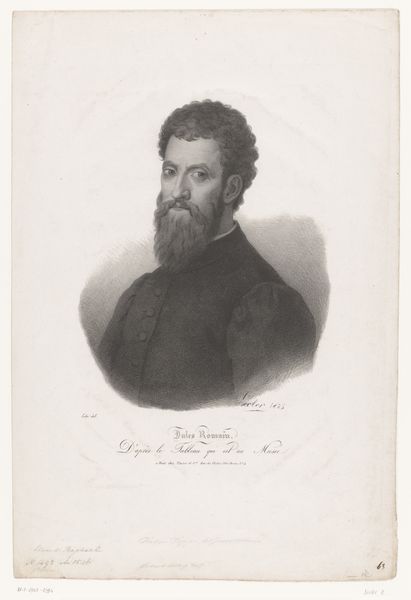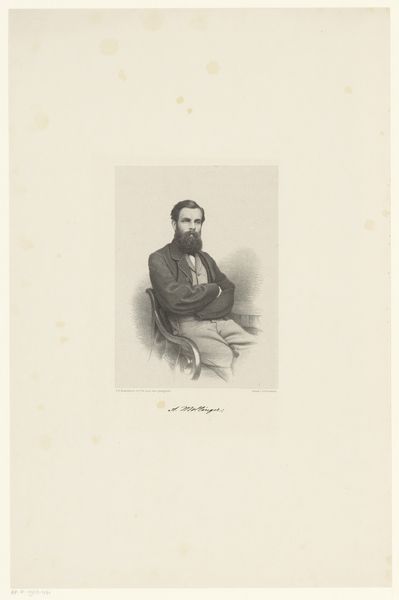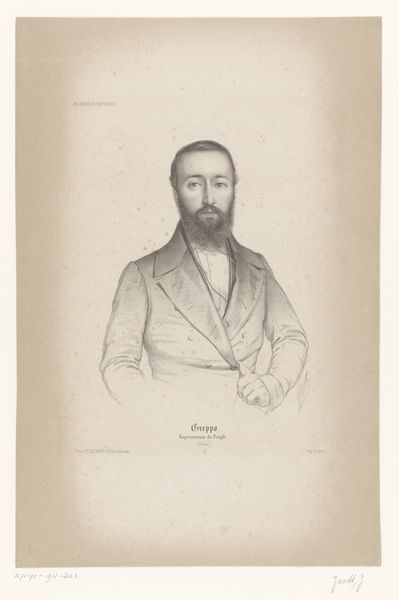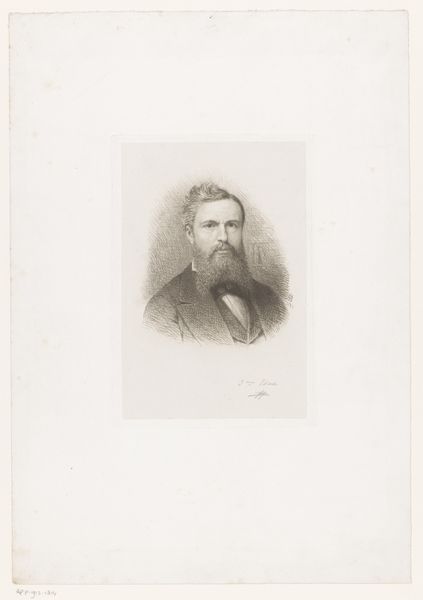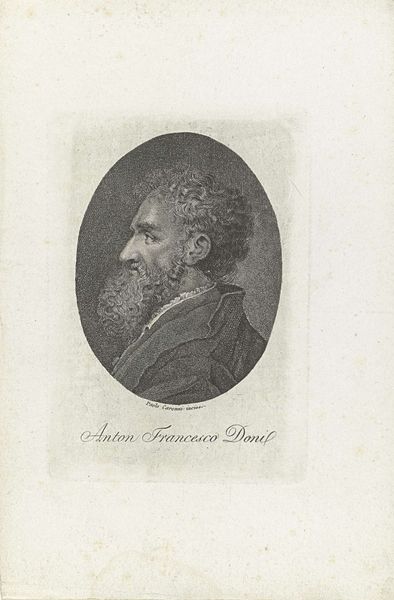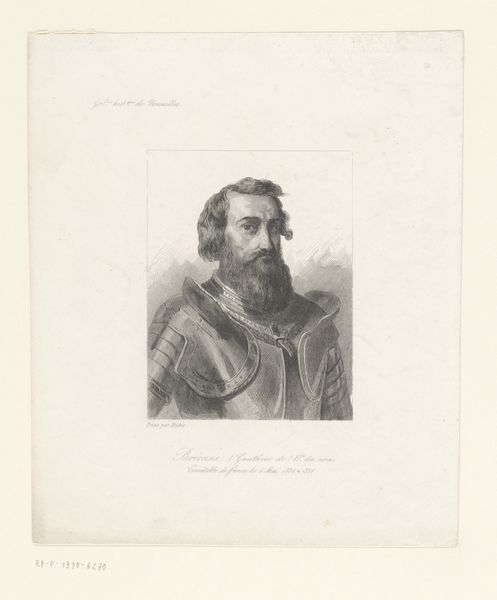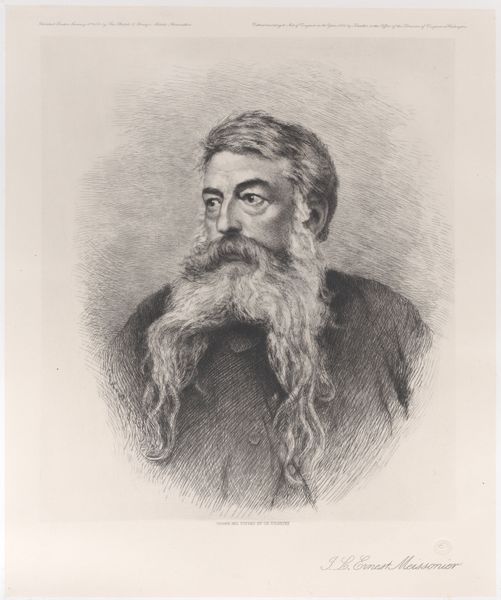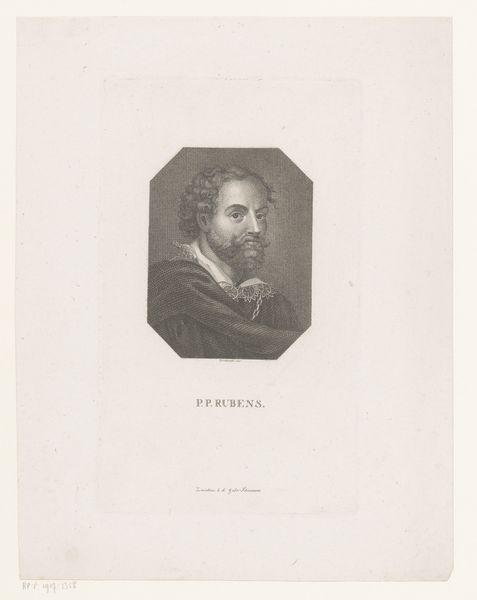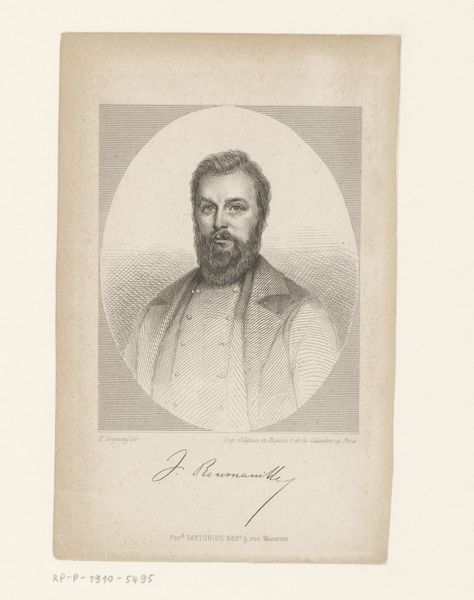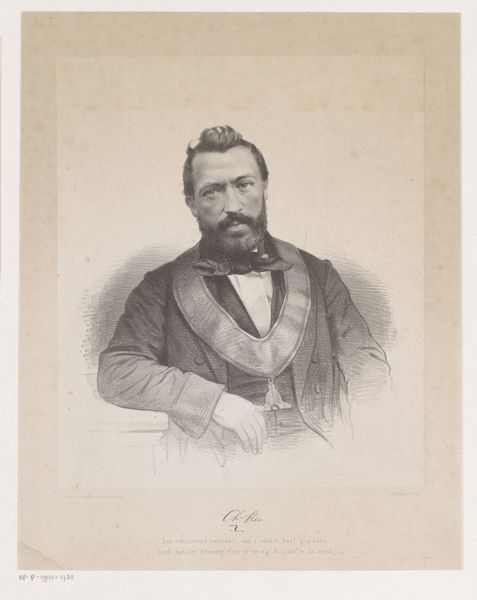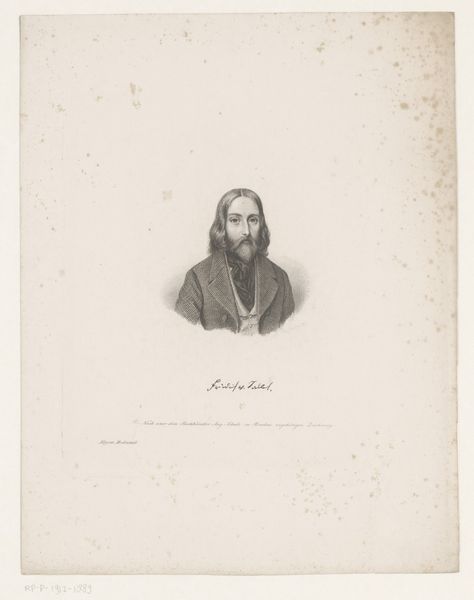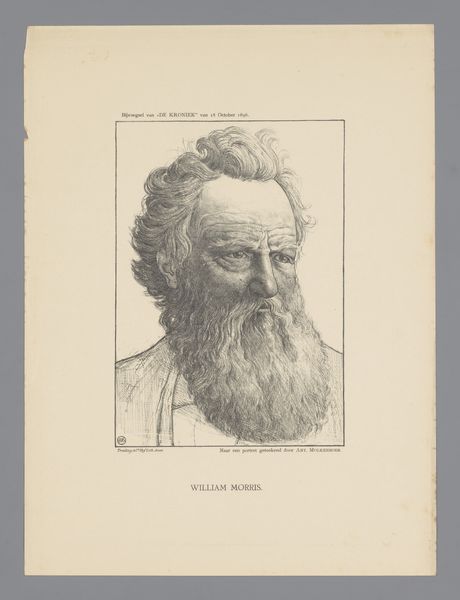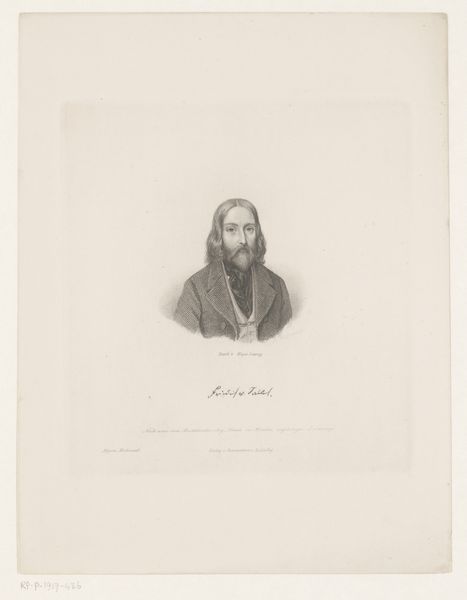
drawing, print, graphite
#
portrait
#
drawing
# print
#
romanticism
#
graphite
Dimensions: sheet: 14 x 10 9/16 in. (35.5 x 26.8 cm)
Copyright: Public Domain
Joseph Henri Deville created this lithograph self-portrait in France in the mid-19th century. What does it mean to present oneself in this way? The lithograph was a relatively new medium at this time. Deville, who also went by the alias J. H. Lictard, presents himself as a figure of almost biblical proportions with his long beard and slightly disheveled hair. Beards in nineteenth-century Europe, became associated with artistic and intellectual rebellion. France was also in the midst of great political change and social unrest during the 1830s and 40s. This self-portrait seems to be a commentary on the social structure of his time, perhaps Deville meant to align himself with the intellectual avant-garde. The image is open to our interpretation as art historians. By consulting archives, publications, and other historical materials, we can delve further into the context of this portrait, revealing the intricate relationship between art, identity, and society.
Comments
No comments
Be the first to comment and join the conversation on the ultimate creative platform.
